 W
WOperation Paperclip was a secret program of the Joint Intelligence Objectives Agency (JIOA) largely carried out by special agents of Army CIC, in which more than 1,600 German scientists, engineers, and technicians, such as Wernher von Braun and his V-2 rocket team, were taken from Germany to the United States, for U.S. government employment, primarily between 1945 and 1959. Many were former members, and some were former leaders, of the Nazi Party.
 W
WMagnus "Mac" Freiherr von Braun was a German chemical engineer, Luftwaffe aviator, rocket scientist and business executive. In his 20s he worked as a rocket scientist at Peenemünde and the Mittelwerk.
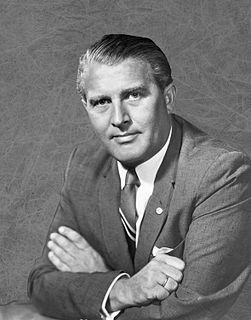 W
WWernher Magnus Maximilian Freiherr von Braun was a German-born American aerospace engineer and space architect. He was the leading figure in the development of rocket technology in Nazi Germany and a pioneer of rocket and space technology in the United States.
 W
WAdolf Busemann was a German aerospace engineer and influential Nazi-era pioneer in aerodynamics, specialising in supersonic airflows. He introduced the concept of swept wings and, after emigrating in 1947 to the United States under Operation Paperclip, invented the shockwave-free supersonic Busemann biplane.
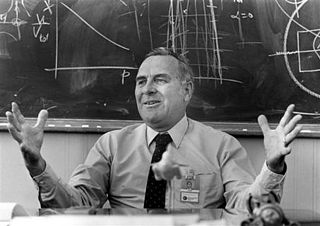 W
WWerner Karl Dahm was an early spaceflight scientist of the Peenemünde Future Projects Office who emigrated to the US under Operation Paperclip and was the Marshall Space Flight Center Chief Aerodynamicist.
 W
WKonrad Dannenberg was a German-American rocket pioneer and member of the German rocket team brought to the United States after World War II.
 W
WKurt Heinrich Debus was a German-born American rocket engineer, the first director of NASA's Launch Operations Center.
 W
WMajor-General Dr. Walter Robert Dornberger was a German Army artillery officer whose career spanned World War I and World War II. He was a leader of Nazi Germany's V-2 rocket program and other projects at the Peenemünde Army Research Center.
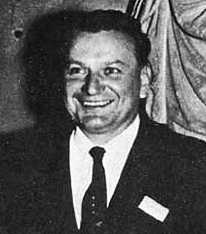 W
WKrafft Arnold Ehricke was a German rocket-propulsion engineer and advocate for space colonization.
 W
WHans Joachim Oskar Fichtner was a rocket scientist who worked on V-2 rockets for Wernher von Braun at Peenemünde from 1939 to 1945. He was among the scientists to surrender and travel to the United States to provide rocketry expertise via Operation Paperclip which took them first to Fort Bliss, Texas (1945–1949). He continued his work with the team when they moved to Redstone Arsenal, and he joined Marshall Space Flight Center to work for NASA.
 W
WErnst Geissler was a German-American aerospace engineer. After World War II, he came to the United States on 16 November 1945 as part of the Argentina group, Operation Paperclip.
 W
WWalter Haeussermann was a German-American aerospace engineer and member of the "von Braun rocket group", both at Peenemünde and later at Marshall Space Flight Center, where he was the director of the guidance and control laboratory. He was awarded the Department of the Army Decoration for Exceptional Civilian Service in 1959 for his contributions to the US rocket program.
 W
WOscar Carl Holderer was an engineer who worked for Nazi Germany during World War II before coming to the United States and working in the Apollo space program.
 W
WWalter Jacobi was a rocket scientist and member of the "von Braun rocket group", at Peenemünde (1939–1945) working on the V-2 rockets in World War II.
 W
WWillibald Jentschke was an Austrian-German experimental nuclear physicist.
 W
WSiegfried Knemeyer was a German aeronautical engineer, aviator and the Head of Technical Development at the Reich Ministry of Aviation of Nazi Germany during World War II.
 W
WKurt Lehovec was one of the pioneers of the integrated circuit. While also pioneering the photo-voltaic effect, light emmiting diodes and lithium batteries, He innovated the concept of p-n junction isolation used in every circuit element with a guard ring: a reverse-biased p-n junction surrounding the planar periphery of that element. This patent was assigned to Sprague Electric.
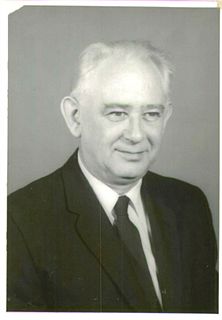 W
WRichard Lindenberg was a physician and pathologist, a Luftwaffe Captain during World War II, later Chief Neuropathologist of the State of Maryland. He testified before the Rockefeller Commission on the death of President John F. Kennedy.
 W
WAlexander Martin Lippisch was a German aeronautical engineer, a pioneer of aerodynamics who made important contributions to the understanding of tailless aircraft, delta wings and the ground effect, and also worked in the U.S.
 W
WMittelwerk was a German World War II factory built underground in the Kohnstein to avoid Allied bombing. It used slave labor from the Mittelbau-Dora concentration camp to produce V-2 ballistic missiles, V-1 flying bombs, and other weapons.
 W
WFritz K. Mueller was a German engineer.
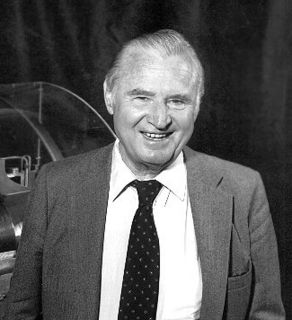 W
WHans Joachim Pabst von Ohain was a German physicist, and the designer of the first operational jet engine. His first design ran in March 1937, and it was one of his engines that powered the world's first flyable all-jet aircraft, the prototype of the Heinkel He 178 in late August 1939. In spite of these early successes, other German designs quickly eclipsed Ohain's, and none of his engine designs entered widespread production or operational use.
 W
WP.O. Box 1142 was a secret American military intelligence facility that operated during World War II. The American Military Intelligence Service had two special wings, known as MIS-X and MIS-Y.
 W
WThe PGM-11 Redstone was the first large American ballistic missile. A short-range ballistic missile (SRBM), it was in active service with the United States Army in West Germany from June 1958 to June 1964 as part of NATO's Cold War defense of Western Europe. It was the first US missile to carry a live nuclear warhead, in the 1958 Pacific Ocean weapons test, Hardtack Teak.
 W
WFritz Karl Preikschat was a German, later American, electrical and telecommunications engineer and inventor. He had more than three German patents and more than 23 U.S. patents, including a dot matrix teletypewriter, a blind-landing system for airports (1965), a phased array system for satellite communications (1971), a hybrid car system (1982), and a scanning laser diode microscope for particle analysis (1989). He was the only engineer to work on both sides of the Space Race: a lab manager for NII-88 in Soviet Union (1946–1952) and a lead engineer for the Space division of Boeing (1960s).
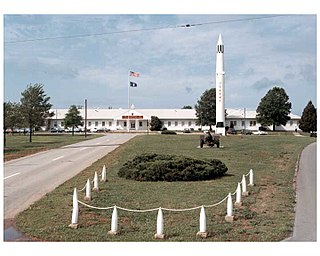 W
WRedstone Arsenal (RSA) is a United States Army post and a census-designated place (CDP) adjacent to Huntsville in Madison County, Alabama, United States and is part of the Huntsville-Decatur Combined Statistical Area. The Arsenal is a garrison for a number of tenants including the United States Army Materiel Command, Army's Aviation and Missile Command, the Missile Defense Agency of the Department of Defense, and NASA's Marshall Space Flight Center. RSA has benefited from decisions by the Defense Base Realignment and Closure Commission. The Redstone Arsenal CDP had a population of 1,946 as of the 2010 census. The base contains a government and contractor workforce that averages 36,000 to 40,000 personnel daily.
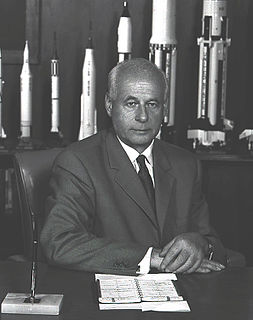 W
WEberhard Friedrich Michael Rees was a German-American rocketry pioneer and the second director of NASA's Marshall Space Flight Center.
 W
WGeorg Johannes Rickhey was a German engineer and the general director of Mittelwerk GmbH in Dora-Mittelbau.
 W
WLudwig Roth was the Aerospace engineer who was the head of the Peenemünde Future Projects Office which designed the Wasserfall and created advanced rockets designs such as the A9/A10 ICBM.
 W
WArthur Louis Hugo Rudolph was a German rocket engineer who was a leader of the effort to develop the V-2 rocket for Nazi Germany. After World War II, the United States Government's Office of Strategic Services (OSS) brought him to the U.S. as part of the clandestine Operation Paperclip, where he became one of the main developers of the U.S. space program. He worked within the U.S. Army and NASA, where he managed the development of several systems, including the Pershing missile and the Saturn V Moon rocket. In 1984, the U.S. Government investigated him for war crimes, and he agreed to renounce his United States citizenship and leave the U.S. in return for not being prosecuted.
 W
WSaturn V was an American super heavy-lift launch vehicle certified for human-rating used by NASA between 1967 and 1973. It consisted of three stages, each fueled by liquid propellants. It was developed to support the Apollo program for human exploration of the Moon and was later used to launch Skylab, the first American space station.
 W
WHeinz Schlicke, German-born engineer and author, an Operation Paperclip scientist, and engineer at the Allen-Bradley Co. in Milwaukee, Wisconsin.
 W
WThe Space Race was a 20th-century competition between two Cold War rivals, the Soviet Union (USSR) and the United States (US), to achieve firsts in spaceflight capability. It had its origins in the ballistic missile-based nuclear arms race between the two nations following World War II. The technological advantage required to rapidly achieve spaceflight milestones was seen as necessary for national security, and mixed with the symbolism and ideology of the time. The Space Race led to pioneering efforts to launch artificial satellites, uncrewed space probes of the Moon, Venus, and Mars, and human spaceflight in low Earth orbit and to the Moon.
 W
WErnst August Wilhelm Steinhoff was a rocket scientist and member of the "von Braun rocket group", at the Peenemünde Army Research Center (1939–1945). Ernst Steinhoff saw National Socialist (Nazi) doctrines as "ideals" and became a member of the NSDAP in May 1937. He was a glider pilot, holding distance records, and had the honorary Luftwaffe rank of "Flight Captain".
 W
WErnst Stuhlinger was a German-American atomic, electrical, and rocket scientist. After being brought to the United States as part of Operation Paperclip, he developed guidance systems with Wernher von Braun's team for the US Army, and later was a scientist with NASA. He was also instrumental in the development of the ion engine for long-endurance space flight, and a wide variety of scientific experiments.
 W
WBernhard Robert Tessmann was a German expert in guided missiles during World War II, and later worked for the United States Army and NASA.
 W
WAdolf Thiel was an Austrian-born German expert in guided missiles during World War II, and later worked for the United States Army and TRW.
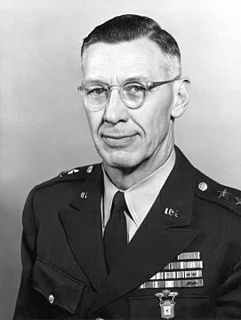 W
WMajor General Holger Nelson Toftoy was a United States Army officer linked to early rocketry such as the Redstone missile.
 W
WThe V-2, with the technical name Aggregat 4 (A4), was the world's first long-range guided ballistic missile. The missile, powered by a liquid-propellant rocket engine, was developed during the Second World War in Germany as a "vengeance weapon", assigned to attack Allied cities as retaliation for the Allied bombings against German cities. The V-2 rocket also became the first artificial object to travel into space by crossing the Kármán line with the vertical launch of MW 18014 on 20 June 1944.
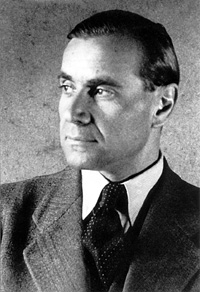 W
WHerbert Alois Wagner was an Austrian scientist who developed numerous innovations in the fields of aerodynamics, aircraft structures and guided weapons. He is most famous for Wagner's function describing unsteady lift on wings and developing the Henschel Hs 293 glide bomb.
 W
WFriedwardt Winterberg is a German-American theoretical physicist and research professor at the University of Nevada, Reno. He is known for his research in areas spanning general relativity, Planck scale physics, nuclear fusion, and plasmas. His work in nuclear rocket propulsion earned him the 1979 Hermann Oberth Gold Medal of the Wernher von Braun International Space Flight Foundation and a 1981 citation by the Nevada Legislature. He is also an honorary member of the German Aerospace Society Lilienthal-Oberth.